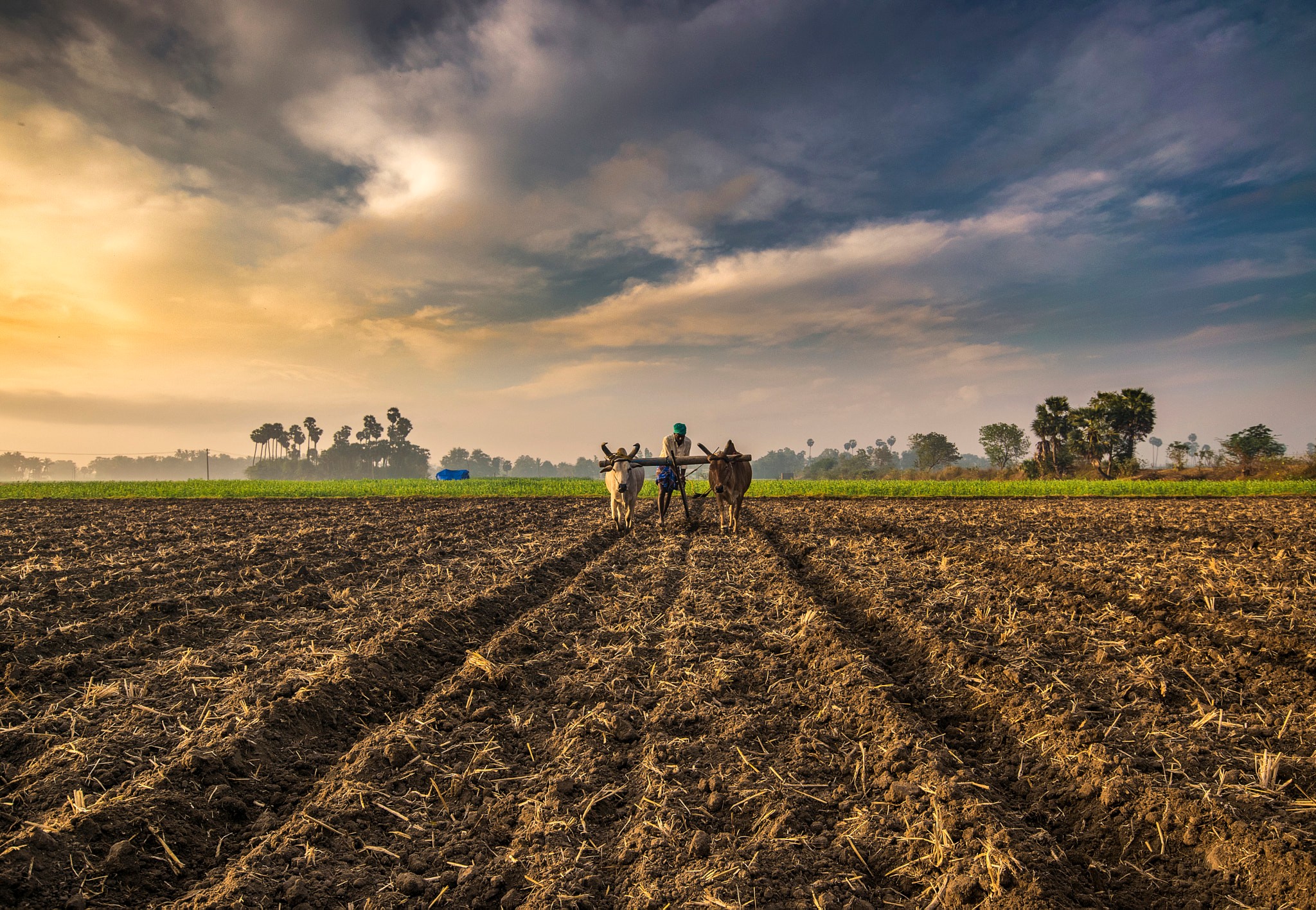 A farmer in Chennai, India (Creative Commons - Public Domain)
A farmer in Chennai, India (Creative Commons - Public Domain)
Climate Stress in the Shadows of India’s Farmer Protests
The farmer protests currently roiling New Delhi are an example of how climate change can interact with existing socio-political and economic tensions to exacerbate instability and conflict.
The protests, which began in September, turned violent at the end of January as tens of thousands of farmers thronged to New Delhi on the country’s Republic Day. In an effort to quell these protests, the government shut the internet down in districts surrounding New Delhi. The farmers are protesting three market-friendly agricultural reforms that promote farmers selling their crops directly to firms outside of a government-managed purchasing system. Farmers fear the laws will lead to the eventual elimination of government-subsidized crop prices and leave them vulnerable to takeover by larger corporations.
Climate Change as an Accelerant of Instability
Agricultural workers make up 55% of India’s workforce and are suffering from languishing incomes and productivity. Climate change acts as an accelerant of instability by exacerbating both phenomena.
In its 2021 Global Climate Index, Germanwatch ranked India as seventh among countries most affected by climate change in 2019, noting that the country’s heaviest rainfall since 1994 displaced 1.8 million people and cost US$ 10 billion in damages. Climate change has caused uneven rainfall patterns during India’s monsoon season, leading to periods of flooding and drought. Uncertainties about monsoonal changes, flood damage, water shortage, and extreme temperatures reduce farmers’ crop output, with wheat and rice productivity particularly vulnerable.
The effects of climate change on India’s farmers is already notable. Indian farmers report changing seasonal patterns and increasing temperatures, as well as decreasing incomes, crop productivity, and livelihood security. Crop-damaging temperatures also increase rates of economically-motivated suicides among farmers, particularly during growing periods.
Though the backlash against the agricultural reforms is complex, the effects of climate change compound resistance to Modi’s reforms. In the face of uncertainty and fluctuation in crop productivity, farmers prefer the safety net provided by subsidized prices and view market-oriented reforms as threatening rather than liberating.
Climate Change in India — And Its Effects on Farmers — Will Get Much Worse
India’s average temperature already increased by 0.7°C between 1901 and 2018, and temperatures are projected to rise by an additional 4.4°C by the end of the century. Recent studies project that every one degree-Celsius temperature increase is associated with a 5.2% decrease in India’s maize yield, a 9.1% decrease in its wheat yield, and a 6.6% decrease in its rice yield.
Climate change will continue to negatively affect farmers’ livelihoods due to desertification, extreme temperatures, and infrastructure damage. Uncertainty about monsoonal rains may also make farmers’ decision-making more risk averse, leading to lower crop yield even in years with good weather. Current models show farmer incomes falling by an average of 15% to 18% this century, and up to 25% in non-irrigated areas which make up 52% of India’s farmland.
Climate change will not only lead to negative agriculture output, it will also disproportionately affect India’s rural poor, including subsistence farmers and landless agricultural workers, who are least able to adapt to the effects of climate change. These trends will increase inequality in India and may spur interstate migration.
Why it Matters
Current farmer protests serve as an example and warning of future political instability as a result of climate change, particularly as the planet continues to warm.
Indian farmers already place little trust in the government’s ability to protect their interests. The unpredictable nature of the agricultural sector will continue to threaten many Indian farmers’ way of life and push them further into poverty and precariousness. This stress, in combination with pre-existing socio-political problems, fosters anger and distrust, propelling disenfranchised farmers to take to the streets and put pressure on the Indian central government.
Decreased human welfare as a result of climate change will continue to act as a force that may strain public budgets, foster political instability, and even change governments. By playing on societal fault lines and spurring social unrest, climate variations may also accelerate sub-state conflict and threaten international security. As an internally fragile society facing climate-induced migration from Bangladesh, rivalry with water-stressed Pakistan, and an ongoing border dispute with China — motivated in part by competition for dam-building on the Brahmaputra River — the potential geopolitical implications of climate change should not be overlooked.
Recommendations:
- The Indian government should consider farmers’ climate vulnerability and incorporate climate adaptation provisions into any major agricultural reforms. The United States should continue to encourage dialogue between farmers and the government.
- The Indian government should support Indian farmers adapt to climate change by (1) expanding irrigation and (2) offering money and resources to farmers help them plant drought-resistant crops and crops that mature early and access crop insurance. The United States Agency for International Development can help the Indian government increase farmers’ productivity and incomes by expanding programs to introduce and train farmers on climate change-resilient farming technologies and techniques.
- The climate threats discussed are the result of a warming climate caused by greenhouse gas emissions. As the world’s third largest emitter of greenhouse gases, India must cut its carbon emissions. As India’s population continues to grow and the country continues to develop, the United States and India should strengthen their bi-lateral cooperation to encourage clean energy investment in India.





